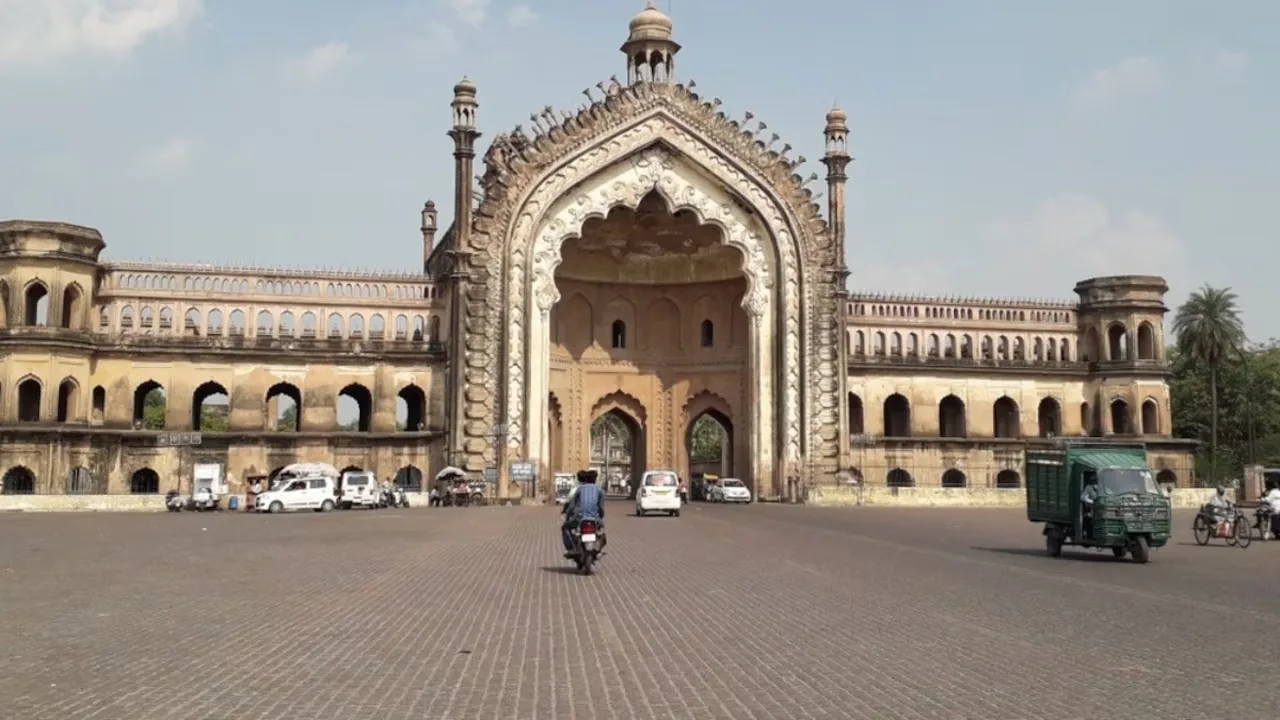Table of Content
- What Is the Unified Circle Rate System?
- Key Objectives of the Unified Circle Rate System in UP
- Major Benefits for Property Owners and Buyers
- Property Valuation Comparison: Before vs After the Unified Circle Rate System
- How the Unified Circle Rate System Works Digitally
- Impact on UP’s Real Estate Market
- Segment-Wise Impact
- Expert Viewpoint
- Conclusion
The Uttar Pradesh government’s decision to introduce a unified circle rate system marks a major milestone in the state’s real estate governance. For the first time, property buyers and sellers can access standardized valuation data through digital platforms, ensuring fair pricing and improved transparency. This initiative not only simplifies the property registration process but also builds trust among investors and developers across the state.
By aligning with the Digital India mission, the unified circle rate system empowers property owners to assess market-aligned values with ease, reducing confusion and disputes that often arise from inconsistent rates.
What Is the Unified Circle Rate System?
The unified circle rate system refers to the standardized valuation model launched by the Uttar Pradesh government to ensure consistency in property registration values across the state.
Earlier, circle rates, also known as guidance values, varied significantly across districts, tehsils, or even within the same locality. These differences often led to undervaluation, confusion, and delayed registrations.
The new system eliminates such inconsistencies by introducing a uniform valuation structure accessible through online portals. This move brings fairness, accuracy, and clarity to property registration, ultimately creating a more transparent real estate ecosystem.
Also Read: Uttar Pradesh to Reduce Stamp Duty and Registration Fees on Rent Agreement
Key Objectives of the Unified Circle Rate System in UP
The government’s unified approach aims to achieve multiple objectives that directly benefit property owners, developers, and the state’s economy:
- Uniformity in Valuation: Ensures consistent property value benchmarks across districts.
- Digital Accessibility: Enables easy online checking of circle rates without visiting government offices.
- Transparency in Transactions: Reduces undervaluation and the scope for black money in real estate.
- Improved Revenue Collection: Facilitates accurate calculation of stamp duty and registration charges.
- Ease of Doing Business: Creates a fair environment for investors and real estate developers.
Major Benefits for Property Owners and Buyers
The unified circle rate system offers multiple benefits that enhance user convenience and confidence in real estate transactions.
1. Transparency
Uniform valuation eliminates ambiguity in property pricing, ensuring that both buyers and sellers have a clear understanding of true market-linked values.
2. Digital Access
Property owners can now view applicable circle rates online through the UP registration portal. This allows easy rate verification before purchase, reducing dependency on middlemen.
3. Efficiency
Online access saves time and minimizes physical visits to sub-registrar offices. Buyers can directly compute registration charges and stamp duties digitally.
4. Trust Building
The transparent process encourages NRIs and domestic investors alike to participate in UP’s real estate market with greater confidence.
Property Valuation Comparison: Before vs After the Unified Circle Rate System
|
City |
Old Circle Rate (₹/sq. ft.) |
Approx. Market Rate (₹/sq. ft.) |
Gap Before (%) |
After Reform (Estimated Gap %) |
|
Lucknow (Gomti Nagar) |
5,000 |
6,200 |
20% |
5–8% |
|
Noida (Sector 75) |
7,500 |
9,000 |
20% |
8–10% |
|
Ghaziabad (Raj Nagar Ext.) |
4,000 |
4,800 |
17% |
5–7% |
|
Kanpur (Swaroop Nagar) |
3,500 |
4,200 |
20% |
6–8% |
Data based on market observations and estimated values; actual rates may vary by locality.
This comparison shows that the unified circle rate system has significantly reduced the gap between circle and market rates, leading to fairer taxation and better price transparency.
How the Unified Circle Rate System Works Digitally
The new system allows anyone to check property valuation online through a simple, step-by-step process:
- Visit the UP Property Registration and Stamp Department portal.
- Select the district, tehsil, and property details.
- Instantly view the applicable circle rate and stamp duty for the chosen property.
- Use integrated GIS maps to verify land type and location-based valuation.
The digital process aligns with the Digital India initiative, providing secure, paperless access to property data. It particularly benefits outstation buyers and NRIs who can now verify rates without physically visiting local offices.
Impact on UP’s Real Estate Market
The introduction of the unified circle rate system is expected to bring structural improvements to Uttar Pradesh’s property market:
- Reduced Undervaluation: Realistic valuation minimizes black money in property transactions.
- Boost in Investor Confidence: Developers and investors gain clarity on pricing benchmarks.
- Fair Project Planning: Builders can plan developments with transparent cost frameworks.
- Enhanced Credit Access: Lenders can assess collateral values more accurately, leading to smoother loan approvals.
Overall, the reform is likely to bring long-term stability to the real estate market, making UP one of the most investor-friendly states in northern India.
Segment-Wise Impact
For Residential Buyers
Homebuyers now enjoy better clarity on property values, reducing the risk of overpayment and ensuring fair registration charges.
For Developers
With consistent valuation norms, developers face fewer approval disputes and can attract institutional investors more confidently.
For the Government
Transparent valuation encourages better compliance, resulting in higher and fairer stamp duty and registration revenue.
Also Read: Uttar Pradesh Govt Allows Noida Authority’s Nod for Extra FAR in Sector 107 Project
Expert Viewpoint
Real estate consultants believe the unified circle rate system represents a transformative step in Uttar Pradesh’s property governance.
Experts point out that states like Maharashtra and Gujarat have long benefited from standardized valuation systems, and UP’s move will bring it closer to these investor-friendly markets.
Industry analysts also predict that transparent valuation will attract more institutional capital, especially in key markets like Lucknow, Noida, and Ghaziabad, further boosting state-wide development.
Conclusion
The unified circle rate system marks a major stride toward transparency, efficiency, and digital empowerment in Uttar Pradesh’s property market. By standardizing valuation and offering easy digital access, it eliminates confusion, reduces undervaluation, and enhances investor trust.
As UP continues to modernize its property registration process, this reform lays a strong foundation for a fair, transparent, and growth-driven real estate ecosystem that benefits all stakeholders, buyers, developers, and the government alike.







Ans 1. The unified circle rate system is a standardized property valuation model introduced by the Uttar Pradesh government to ensure consistent circle rates across districts and tehsils, reducing discrepancies between market and registration values.
Ans 2. The system was introduced to increase transparency, reduce undervaluation, simplify property registration, and build investor trust by providing standardized, easily accessible property valuation data.
Ans 3. Buyers benefit from clear, market-aligned property values, reduced risk of overpayment, easier verification of rates online, and fair calculation of stamp duty and registration charges.
Ans 4. Yes. Property owners can access circle rates digitally through the UP Property Registration and Stamp Department portal by selecting district, tehsil, and property details. GIS maps help verify land type and location-based valuation.
Ans 5. Developers gain clarity on valuation norms, enabling fair project planning, fewer disputes, and easier access to institutional investment and loans.
Ans 6. Yes. By aligning circle rates closer to actual market rates, the system minimizes undervaluation, discouraging under-the-table deals and improving compliance.
Ans 7. Before the reform, gaps between circle and market rates ranged from 17–20% in key cities. Post-reform, the gap has reduced to around 5–10%, creating more transparent and fair property pricing.
Ans 8. Key urban markets like Lucknow, Noida, Ghaziabad, and Kanpur see the most significant benefits, particularly for residential buyers and developers.
Ans 9. Yes. Experts predict the reform will boost investor confidence, attract institutional capital, enhance credit access, and bring long-term stability to the state’s real estate ecosystem.
Ans 10. The online circle rate access enables paperless, transparent, and secure property data verification, especially benefiting outstation buyers and NRIs, aligning with the Digital India mission.